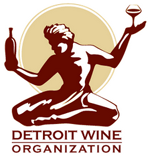The wines of Alsace have a distinctive character and style that sets them apart from the other wine growing regions of France. Its wines are also totally different from those produced in neighboring Germany.
Located in North Eastern France, on the German border, Alsace is proud of its unique regional identity. Yet confusion still exists. Admittedly, between 1871 and 1919, Alsace was part of Germany and influences, to this day, remain strong. Other confusing factors, however, also exist.
First and foremost, Alsace and Germany grow the same grape varieties. For instance, Alsace’s finest and most widely planted grape – the superior, zesty and aromatic Riesling is also Germany’s finest variety. Then there’s Gewürztraminer. This delightfully heady variety is also grown extensively across the border. Even the village and grands crus (superior single vineyard) names of Alsace, such as “Kessler” and “Fürstentum” sound Germanic. To further confuse the issue, Alsace and German wines are even bottled in similarly shaped, thin green bottles that taper at the neck.
But this is where the similarity ends! Take winemaking procedures, for a start. Once Riesling grapes, for instance, have been harvested they are processed in a very different manner. In Alsace, every bit of sugar is fermented from the grapes; while in Germany a small amount of the naturally sweet unfermented grape juice is returned to the finished product to create that distinctive, sweet Germanic style. Another fundamental difference between the wines of Alsace and Germany is the alcohol content. Wines from Alsace have a higher alcohol content of between 11 and 12 per cent and the vast majority of the region’s output is totally dry. German wines, on the other hand, contain a mere 8 to 9 per cent alcohol and many are cloyingly sweet.
The wines of Alsace are produced in old, inert oak barrels; they never see new oak and this is largely responsible for their distinctive character and flavor.
Main Grape Varieties:
The bulk of Alsace wine is white and produced mainly from the following four grape varieties – Riesling, Gewürztraminer, Pinot Blanc (Klevner) and Tokay (Pinot Gris).
When it comes to style, it has been argued that no region in the world can match Alsace for balancing aromatic rich, dry spiciness with fat, rounded complexity.
Riesling with its floral, zesty and spicy flavors is the leading grape variety and accounts for approximately 25% of total production. It is also responsible for some of the world’s finest quality white wines. Of the four main grapes used in Alsace, Gewürztraminer is by far the spiciest and most aromatic. Even the usually light, fairly neutral Pinot Blanc, however, takes on a creamier and more appley character, in the wines made in Alsace. Pinot Gris is second only to Gewürztraminer in its richness, though it tends to have dominant earthy, honeyed overtones, as opposed to the rose and lychee aromas of latter.
Other Alsace grapes include Muscat and Sylvaner. Sylvaner is often blended with Riesling to produce a popular white Alsace wine called “Edelzwicker” The red Pinot Noir grape is also used to make small quantities of red and rosé known as “Claret d’Alsace” or “Schillerwein”. The delightful sparkling Crémant d’Alsace is made mostly from a combination of Riesling and Pinot grapes.
Appellations and Labeling:
There are three appellations in Alsace.
AC Alsace (Appellation d’Origin Contrôlée) is the basic appellation for still wine.
AC Grand Cru, introduced in 1983, is used to describe wines of superior quality A Grand Cru wine can only come from the best sites and must be produced from the best grape varieties such as Riesling, Gewürztraminer, Pinot Gris and Muscat. As standards tend to vary between the 50 designated Grand Cru sites, it is often better to be guided by the name of the specific producer rather than the name of the vineyard.
The third AC is Crémant d’Alsace which applies to the sparkling wines of the region.
Wine labeling, in Alsace, is different from other regions administered by the A.O.C. classification system. It was the first region of France to label its wine according to grape variety. All Alsace wines, that put the name of the grape variety on the label, must contain a 100% of that grape.
Terroir and Climate:
This northerly region of France produces predominantly white wines because of the shorter growing season and its cooler climate – both of which are best suited to growing white grapes. The key to successful wine production, so far north, lies in the Vosges Mountains which rise high to the west and draw moisture from the westerly winds, leaving the east-facing slope to benefit from the second driest climate in France. Its sunny, semi-continental climate and remarkably low rainfall makes it very well suited to growing vines. Only the Pinot Noir, Alsace’s lone red grape variety, has some difficulty ripening in this North Eastern terroir.
Jevon is a board member


Leave A Comment